THE NEW VOICE OF GOR (short online version) PUBLICARE ET PROPAGARE ...
THE NEW VOICE OF GOR (short online version) PUBLICARE ET PROPAGARE ...
THE NEW VOICE OF GOR (short online version) PUBLICARE ET PROPAGARE ...
You also want an ePaper? Increase the reach of your titles
YUMPU automatically turns print PDFs into web optimized ePapers that Google loves.
disks."<br />
(Outlaw of Gor, page 155)<br />
True or False: slaves are used for many types of work throughout Gor including siege works,<br />
the building of roads and public buildings.<br />
"Goreans generally do not employ slaves for such labors as road construction, siege works,<br />
raising walls, and so on. Similarly they generally would not use them for the construction of<br />
temples and public buildings. Most such work is generally done by the free labor of a given<br />
community, though this 'free labor' may, upon occasion, particularly in emergencies, be<br />
'levied,' the laborers then contributing their labor as a form of special tax, or, if you like, as<br />
having been 'conscripted' or 'drafted,' rather as if for military service."<br />
(Dancer of Gor, page 328)<br />
We are all familiar with the <strong>short</strong>, stabbing sword called the gladius. The Alars have a similar<br />
weapon, but it is called by a different name. What is that name<br />
"He also carried among his things the <strong>short</strong>, stabbing sword, similar to the gladius, and<br />
doubtless related to it, called by his people the sacramasax. It is much more useful on foot,<br />
particularly in close combat."<br />
(Mercenaries of Gor, page 61)<br />
You come upon a group of rencers in the Vosk River Delta. A variety of activities are going on,<br />
all that seem to be related. One group is slicing the stems of the rence plant into thin, narrow<br />
strips. The next are carefully arranging them in a lattice pattern. Others are pounding,<br />
scraping and flattening the latticed strips. What are they making<br />
"Rence paper is made by slicing the stem into thin, narrow strips; those near the center of the<br />
plant are particularly favored; one layer of strips is placed longitudinally, and then a <strong>short</strong>er<br />
layer is placed latitudinally across the first layer; these two surfaces are then soaked under<br />
water, which releases a gluelike substance from the fibers, melding the two surfaces into a<br />
single, rectangular sheet; these formed sheets are then hammered and dried in the sun;<br />
roughness is removed by polishing, usually with a smooth shell or a bit of kailiauk horn; the<br />
side of a tharlarion tooth may also be used in this work. The paper is then attached, sheet to<br />
sheet, to form rolls, usually about twenty sheets to a roll. The best paper is on the outside of<br />
the roll, always, not to practice deceit in the quality of the roll but rather to have the most<br />
durable paper on the outside, which will take the most weathering, handling and general wear.<br />
Rence paper comes in various grades, about eight in all. The rence growers market their<br />
product either at the eastern or western end of the delta."<br />
(Raiders of Gor, page 7)<br />
Wandering through the forests of Gor, you hear in the distance, the rapid, staccato slap of a<br />
sharp beak against the wood of a tree. You move closer and see a yellow-breasted bird,<br />
pulling a larvae from the bark of a tree. What is the bird


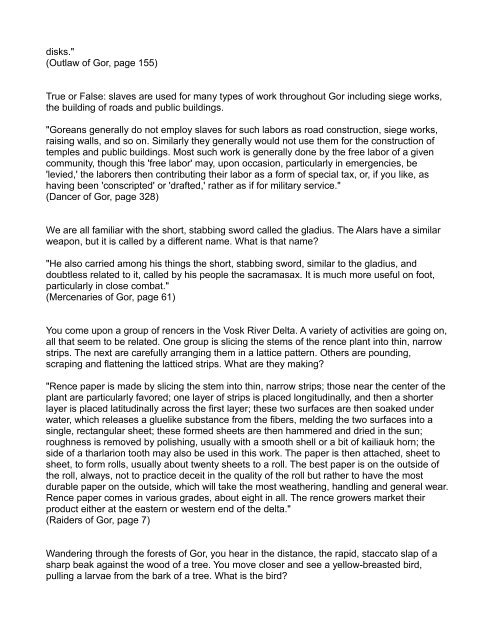

![THE NEW VOICE OF GOR [short online version] PUBLICARE ET PROPAGARE ...](https://img.yumpu.com/49908350/1/190x245/the-new-voice-of-gor-short-online-version-publicare-et-propagare-.jpg?quality=85)
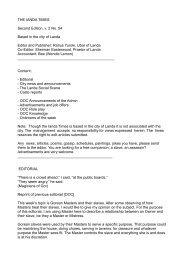
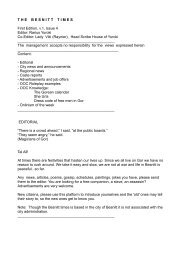
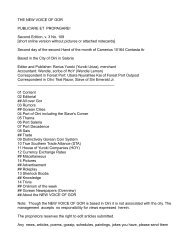
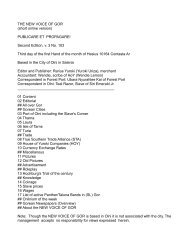



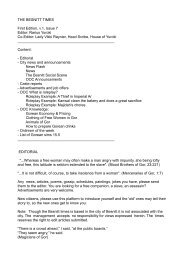
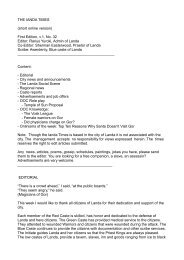
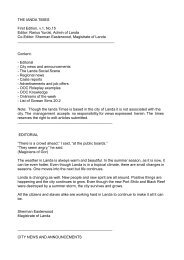
![THE IANDA TIMES [Shorter online version] First Edition, v.1, No ...](https://img.yumpu.com/36268258/1/184x260/the-ianda-times-shorter-online-version-first-edition-v1-no-.jpg?quality=85)

